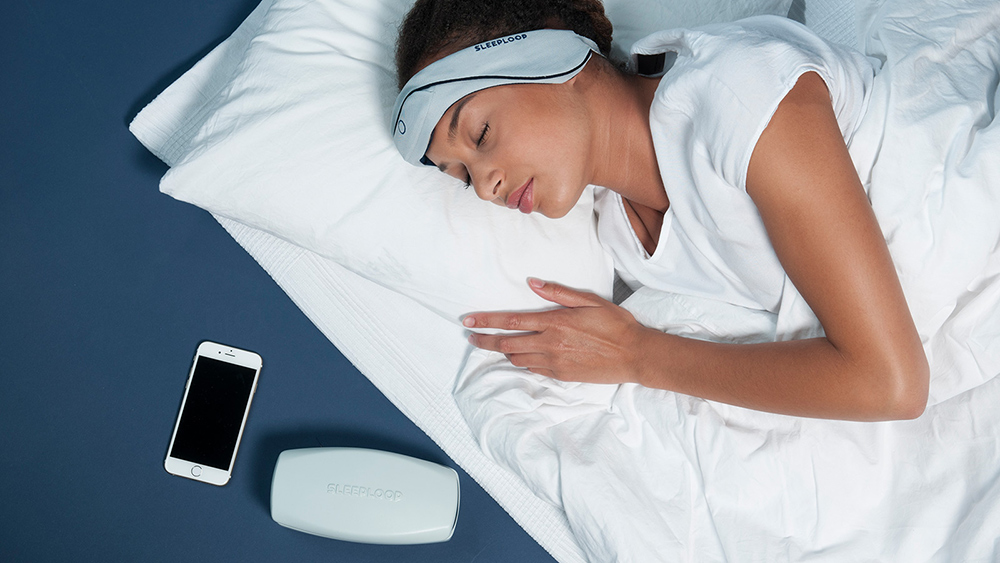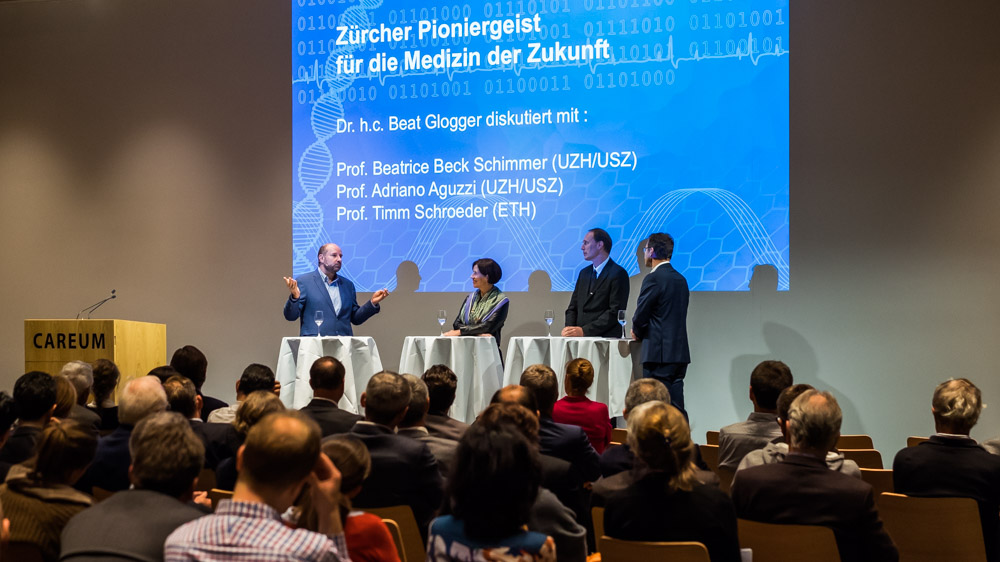Sleeping Soundly with SleepLoop
It’s important not just for the brain’s development, but also for its daily “housekeeping” (tidying and sorting), and for learning – the key to good performance and well-being is a good night’s sleep. Now, an innovative project by researchers from UZH, ETH Zurich, and the University’s hospitals has the ambitious goal of influencing sleep by means of a miniaturized portable computer system.
Christian Baumann, professor of neurology at UZH, presented the SleepLoop project at University Medicine Zurich’s annual event. An interdisciplinary group of researchers and engineers designed the system, which measures brainwaves on the surface of the head while the wearer sleeps, analyzes them in real time, and then modulates them in a targeted way.
This is possible because nerve cell clusters in the brain oscillate in characteristic wave patterns depending on how deep the sleep is. If an acoustic signal reaches the brain at a specific point in the wave pattern, the amplitude of the oscillation becomes greater, and the sleep gets deeper. It also works the other way around: If the acoustic signal reaches the brain at the opposite point of the oscillation cycle, the sleep becomes lighter.
Prevention and treatment of lifestyle diseases
“The sound is so quiet that it doesn’t wake people up,” explained Baumann. The current prototype consists of a headband with built-in electrodes and headphones through which the wearer hears acoustic signals. Both are connected wirelessly with a smartphone. “We’re working on further technical developments as part of the project,” said Baumann. “Our goal is to make the system small enough for it to be really user-friendly and suitable for home use.”
But the SleepLoop isn’t just intended for measuring sleep at night. A movement sensor on the wrist also records physical activity during the day, and how the user touches the screen of their smartphone allows the system to obtain information about the alertness of that person. “All these data are integrated into the system and enable us to individually determine the level of stimulation,” said Baumann.
Improving quality of life
SleepLoop could be of use in many different areas. For example, the researchers want to find out whether in neurodegenerative diseases such as Parkinson’s, more deep sleep could alleviate the typical motor symptoms and improve the quality of life of those suffering from the disease.
Acute sleep deprivation is recognized as one of the most effective ways of treating depression, but it is not sustainable over a long period of time. “With SleepLoop,” said Baumann, “we can make sleep partially lighter so that we get the therapeutic effect without the side effects.”
And last but not least, sleep has a strong influence on many other systems of the body, from the metabolism to the immune system. “The technology also offers great possibilities for the prevention and treatment of lifestyle diseases such as diabetes or cardiovascular diseases,” said Baumann.
Working together
In the subsequent panel discussion, participants discussed the need for a pioneering spirit to develop the medicine of the future, with Beat Glogger, science journalist and editor of the book Zürcher Pioniergeist, moderating the debate. What is needed in order to engender a pioneering spirit? Above all, time to be creative, agreed all the panel members. But they warned that for young researchers, time could be in short supply. “Precisely when they are at the peak of their creativity, they are under enormous pressure to publish as often as possible,” said Timm Schroeder, professor of cell systems dynamics at ETH Zurich. “But a week or two earlier or later doesn’t matter when it comes to publishing new findings.”
Particularly for physicians at the University’s hospitals, it could be very difficult to find enough time for research on top of day-to-day clinical commitments, added Beatrice Beck Schimmer, professor of anesthesiology at UZH. She is a pioneer in the area of combining academic and clinical duties, establishing the career support program Filling the Gap at UZH.
Adriano Aguzzi, professor of neuropathology at UZH, pointed out that as well as time, real breakthroughs required individual talent and commitment. But he qualified that by saying that teamwork and collaboration were still important – above all, researchers needed to take an interest in each other’s work. “We need to approach each other more and draw on the expertise and ideas of others,” he added.
University Medicine Zurich came into being for just this kind of networking, and has just published a compendium called Who is Who in Medical Research.


